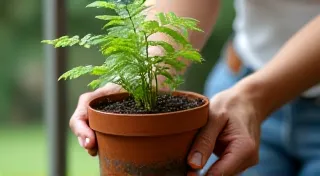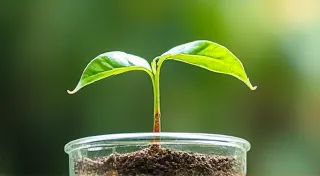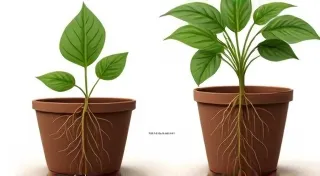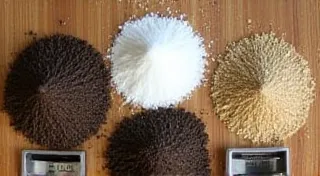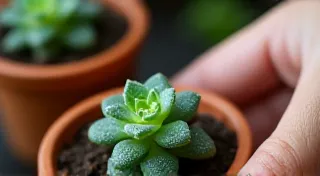Seasonal Plant Care: Adjusting Your Routine Throughout the Year
Your plant care routine shouldn’t be a one-size-fits-all approach. Just like we adjust our clothing and habits with the changing seasons, your houseplants benefit from adjustments to their care too. Understanding these seasonal needs can significantly improve their health and vibrancy. This guide will cover the key adjustments you should make throughout the year to ensure your indoor plants thrive.
Spring: The Growing Season
Spring is a period of renewed growth for many houseplants. Longer days and increased sunlight signal it’s time for them to kick into high gear. Before you get started, ensure your plants are in appropriate containers; selecting the right pot size is critical for root health and growth. Here's what to focus on:
- Increased Watering: Plants use more water during active growth. Check soil moisture more frequently and water when the top inch or two feels dry.
- Fertilizing: Start or resume fertilizing according to the plant's needs. Use a balanced houseplant fertilizer, following package instructions.
- Repotting: Spring is an ideal time to repot plants that have become root-bound. Consider this a good opportunity to learn repotting 101, ensuring your plant has enough space to flourish. Choose a pot that's slightly larger than the current one.
- Pruning: Trim away any dead or damaged leaves and stems. Spring is also a good time for light shaping and pruning to encourage bushier growth. Learn more about pruning houseplants to master the techniques for optimal growth.
Summer: Managing Heat and Humidity
Summer brings warmer temperatures and often higher humidity, but also potential challenges for houseplants. The intense summer sun can be particularly harsh, so it's important to be mindful of how you're caring for them.
- Watering: Continue to monitor watering needs closely. Hot weather means more frequent watering for many plants. Overwatering can become a more significant issue in the summer months, so be sure to check soil moisture before watering.
- Humidity: Most houseplants appreciate higher humidity. Consider grouping plants together, using a humidifier, or placing plants on trays filled with pebbles and water (ensuring the pot isn’t sitting directly in the water). Some species, like ferns and calatheas, especially thrive in humid environments.
- Sunlight: While plants love sunlight, intense summer sun can scorch leaves. Be mindful of direct sunlight, especially in the afternoon. Move plants further away from windows if needed. East-facing windows often provide gentler morning light.
- Ventilation: Good air circulation helps prevent fungal diseases. Ensure plants aren't overcrowded and that there's adequate ventilation. A gentle breeze can make a big difference.
Autumn: Preparing for Dormancy
As daylight hours shorten and temperatures cool, plants begin to slow down their growth, preparing for a period of dormancy. This transition is crucial for their overall health. Maintaining proper care during autumn sets the stage for a successful winter.
- Reduced Watering: Gradually reduce watering frequency. Allow the soil to dry out a bit more between waterings. This helps prevent root rot, a common problem during cooler months.
- Fertilizing: Stop or significantly reduce fertilizing. This helps plants harden off for winter and prevents excess, weak growth. Continuing to fertilize during this period can lead to plants being more susceptible to pests and diseases.
- Pest Control: Check plants regularly for pests, as they can become more prevalent during periods of stress. Treat any infestations promptly. A preventative spray with insecticidal soap can be beneficial.
- Clean Leaves: Wipe down leaves to remove dust and allow them to photosynthesize efficiently as light levels decrease. This also helps prevent pest infestations by removing potential hiding places.

Winter: Dormancy and Minimal Care
Winter is typically the most dormant period for houseplants. Less light and cooler temperatures mean slower growth, and therefore reduced care needs. While the reduced care might seem like a welcome break, it's still important to provide the right conditions to support their health.
- Minimal Watering: Water sparingly. Allow the soil to dry out considerably between waterings. Overwatering is a common problem during winter. Stick your finger deep into the soil to gauge moisture levels.
- No Fertilizing: Do not fertilize during winter. Adding fertilizer when plants aren't actively growing can build up salts in the soil, leading to toxicity.
- Sunlight: Provide as much natural light as possible. If natural light is limited, consider using a grow light. Supplementing with a grow light can make a significant difference in the overall health and appearance of your plants during the darker months.
- Temperature: Protect plants from drafts and sudden temperature fluctuations. Cold drafts can stress plants and make them more susceptible to disease.
Choosing the right plants for your home is a critical first step in creating a thriving indoor jungle. If you’re just starting out, explore some of the best houseplants for beginners. Easy-care options like snake plants, ZZ plants, and pothos can offer a rewarding introduction to the world of indoor gardening.

By understanding and adapting your plant care routine throughout the year, you can create a thriving indoor jungle and enjoy the beauty and benefits of houseplants year-round. Remember to always research the specific needs of each plant, as some may have unique seasonal requirements. Observing your plants closely and adjusting your care accordingly is key to their continued health and vitality.

